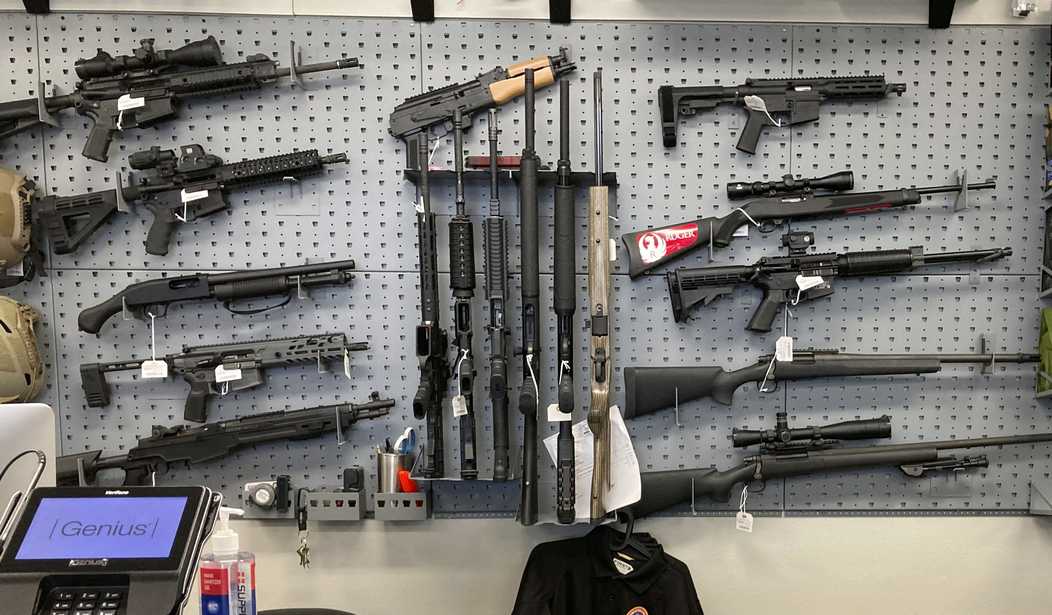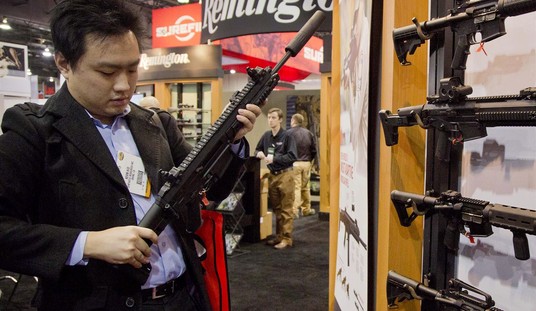Gun owners and Second Amendment advocates won a huge victory on Friday with U.S. District Judge Stephen McGlynn’s order granting a preliminary injunction against the enforcement of Illinois’ ban on so-called assault weapons and large capacity magazines. McGlynn delivered a strong rebuke to the architects of the ban in his ruling, noting the Highland Park Independence Day was the impetus for the ban and wondering whether the “senseless crimes of a relative few be so despicable to justify the infringement of the constitutional rights of law-abiding individuals in hopes that such crimes will then abate or, at least, not be as horrific?”
The answer, according to McGlynn, is “likely no“; reason enough to grant an injunction and halt enforcement of the law’s provisions.
The Supreme Court in Bruen and Heller held that citizens have a constitutional right to own and possess firearms and may use them for self-defense. PICA seems to be written in spite of the clear directives in Bruen and Heller, not in conformity with them. Whether well-intentioned, brilliant, or arrogant, no state may enact a law that denies its citizens rights that the Constitution guarantees them. Even legislation that may enjoy the support of a majority of its citizens must fail if it violates the constitutional rights of fellow citizens.
McGlynn is well aware that two other district judges in Illinois have recently declined to issue injunctions, ruling instead that the new bans are most likely constitutional under the theory that AR-15s and other semi-automatic rifles are “unusually dangerous” and that the bans are a response to an “unprecedented change” in society; namely acts of mass shootings. The Seventh Circuit is the next stop for the state’s gun ban, and McGlynn provided the appellate court judges with a well-reasoned and thoughtful argument in favor of the injunction, starting with the state’s argument that “non-essential accessories” like magazines that can hold more than 15 rounds fall outside the scope of the Second Amendment.
PICA outlaws possession of a “semiautomatic pistol” with a detachable magazine if it is equipped with any of the following: “a threaded barrel,” “a shroud attached to the barrel or that partially or completely encircles the barrel,” “a flash suppressor,” or “arm brace.” PICA further outlaws possession of a magazine for a handgun capable of holding more than 15 rounds of ammunition and of “[a] semiautomatic pistol that has a fixed magazine with the capacity to accept more than 15 rounds.” Defendants contend that such items are not necessary to the functioning of a firearm and are thus not “arms” and therefore not protected by the Second Amendment.
Defendants’ argument is not persuasive. The Seventh Circuit has recognized the Second Amendment as extending to “corollar[ies] to the meaningful exercise of the core right to possess firearms for self-defense.” It is hard to imagine something more closely correlated to the right to use a firearm in self-defense than the ability to effectively load ammunition into the firearm. The Third Circuit recognized the importance of this corollary and held that “a magazine is an arm under the Second Amendment.”
As does McGlynn. But what about those “unusually dangerous” guns banned by PICA? Again, McGlynn says they’re covered by the Second Amendment.
Defendants first argued that PICA is consistent with historical tradition because “[n]either large capacity magazines nor assault weapons were in common use when the Second and Fourteenth Amendments were ratified.” This argument is “bordering on the frivolous” because “the Second Amendment extends, prima facie, to all instruments that constitute bearable arms, even those that were not in existence at the time of the founding.”
Defendants also argued that “[t]he Act restricts weapons and accessories not commonly used for selfdefense today.” Similarly, this argument is misplaced. Bruen clearly holds that the Second Amendment protects “possession and use” of weapons “in common use” not just weapons in common use for self-defense as Defendants’ argued. Even if there was a requirement that the “common use” of an “arm” be self-defense, AR-15 style rifles would meet such a test considering that 34.6% of owners utilize these rifles for self-defense outside of their home and 61.9% utilize them for self-defense at home.
So the arms in question are protected by the Second Amendment. But are their any historical analogues that Illinois can point to to justify its ban? McGlynn was entirely unpersuaded by the state’s “evidence”.
Defendants relied on a litany of experts to support the proposition that a ban on “assault rifles” has sufficient historical analogues to pass constitutional muster. However, the relevant analysis of each historic firearm regulation must be centered around “how and why” the regulation burdened Second Amendment rights. As the Defendants’ counsel noted, the regulations cited by Defendants’ experts were “[c]onceal carry regulations . . . that’s what they were. They were largely conceal carry regulations.” The “how and why” of a concealed carry regulation is categorically different than the “how and why” of a ban on possession and cannot pass “constitutional muster” as a historical analogue to demonstrate this Nation’s historical tradition regarding an “arms” ban.
Unlike the convoluted and unconvincing (to me, anyway) arguments used by McGlynn’s colleagues in their opinions rejecting motions for a preliminary injunction McGlynn’s analysis is pretty simple and straightforward. Honestly, that’s how it should be. The Second Amendment protects arms that are in common use. Modern sporting rifles and magazines with a capacity of more than 15 rounds are owned by tens of millions of Americans; as McGlynn pointed out, there are more AR-15s than Ford 150s in this country. That’s pretty freaking common, and as such a ban is simply off the table.
McGlynn’s eloquence was on full display when he explained the real harms that would be done by letting the law remain in effect while the court challenge plays out.
The Court must also balance the severity of PICA against the core Second Amendment right of armed self-defense with the public-interest justification of protecting Illinois communities. With respect to the public-interest justification, the answer is less clear-cut and there are two sides that need to be considered. It is uncontroverted that law-abiding members of society, including the elderly, infirmed, and disabled, have the constitutional right to arm themselves for self-defense. As discussed during briefing:
The need for self-defense is not insignificant. According to a report by the Department of Justice, Bureau of Justice Statistics, household members are present for almost a third of all burglaries and become victims of violent crimes in more than a quarter of those cases. Studies on the frequency of defensive firearm uses in the United States have determined that there are up to 2.5 million instances each year in which civilians used firearms for home defense.
Handguns, many of which are limited under PICA, are “the most preferred firearm in the nation to ‘keep’ and use for protection of one’s home and family.” It is also uncontroverted that many of the banned modifiers, including but not limited to pistol grips, protruding grips, flash suppressors, and shrouds, have legitimate purposes that assist law-abiding citizens in their ability to defend themselves. The other side is less clear – there is no evidence as to how PICA will actually help Illinois Communities. It is also not lost on this Court that the Illinois Sheriff’s Association and some Illinois States Attorneys believe PICA unconstitutional and cannot, in good conscience, enforce the law as written and honor their sworn oath to uphold the Constitution.
In no way does this Court minimize the damage caused when a firearm is used for an unlawful purpose; however, this Court must be mindful of the rights guaranteed by the Constitution. While PICA was purportedly enacted in response to the Highland Park shooting, it does not appear that the legislature considered an individual’s right under the Second Amendment nor Supreme Court precedent. Moreover, PICA did not just regulate the rights of the people to defend themselves; it restricted that right, and in some cases, completely obliterated that right by criminalizing the purchase and the sale of more than 190 “arms.” Furthermore, on January 1, 2024, the right to mere possession of these items will be further limited and restricted Accordingly, the balance of harms favors the Plaintiffs.
The Court recognizes that the issues with which it is confronted are highly contentious and provoke strong emotions. Again, the Court’s ruling today is not a final resolution of the merits of the cases. Nothing in this order prevents the State from confronting firearm-related violence. There is a wide array of civil and criminal laws that permit the commitment and prosecution of those who use or may use firearms to commit crimes. Law enforcement and prosecutors should take their obligations to enforce these laws seriously. Families and the public at large should report concerning behavior. Judges should exercise their prudent judgment in committing individuals that pose a threat to the public and imposing sentences that punish, not just lightly inconvenience, those guilty of firearm-related crimes.
I think most of us had a feeling that McGlynn’s decision was going to come down in favor of the plaintiffs, especially after the pointed and pertinent questions he raised during the oral arguments on the injunction request a few weeks ago. Second Amendment attorney Chuck Michel, lead attorney in one of the consolidated cases McGlynn ruled on today told Bearing Arms that he was impressed by McGlynn’s gun knowledge during the arguments, and I’m sure he’s thrilled by McGlynn’s decision (something we’ll be talking with him about on Cam & Co next week) today. In a statement to Bearing Arms on Friday afternoon, Michel called the opinion “a tremendous victory for the Second Amendment and people who want to own these firearms and accessories to defend their families,” reiterating that the judge’s “knowledge of firearms shows in his ruling”.
Michel added, “sadly, many judges do not have that understanding and so fall for the government’s misrepresentations about firearms technology. But in this case, the judge understood the facts and faithfully applied the law set forth by the Supreme Court in its Heller and Bruen decisions. Now we have to hold on to the win in the Seventh Circuit because the state will undoubtably appeal.”
No doubt, but Glynn’s order says that “Defendants are ENJOINED from enforcing Illinois statutes 720 ILCS 5/24-1.9(b) and (c), and 720 ILCS 5/24-1.10, along with the PICA amended provisions set forth in 735 ILCS 5/24-1(a), including subparagraphs (11), (14), (15), and (16), statewide during the pendency of this litigation until the Court can address the merits”, and so far hasn’t issued any order staying the injunction to give the state time to appeal. We’ll see if this turns into a “Freedom Weekend” (or longer) at many gun shops across the state, but it’s definitely a good Friday for Illinois gun owners.









Join the conversation as a VIP Member